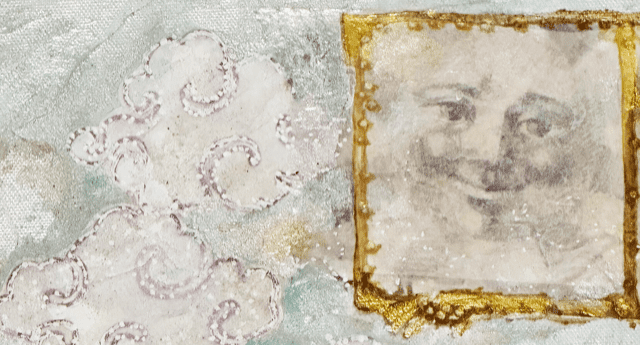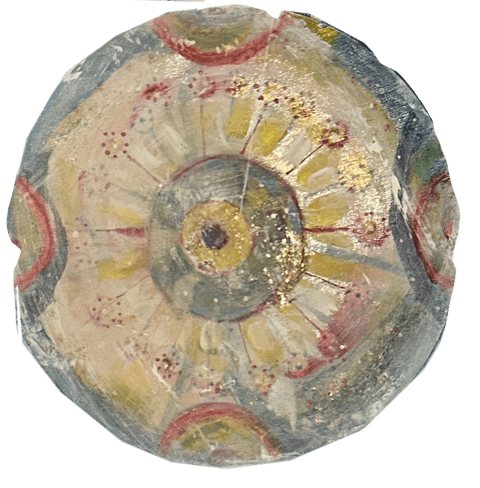How to Die (Based on The Mirror of Mindfulness)
My father Malcom lived until age 87. He embodied the essential instructions on how to die found in The Mirror of Mindfulness by Tsele Natsok Rangdrol, a great and learned Tibetan Buddhist master. The essential points are: 1) practice what you know best 2) be delighted to die 3) die without fear, and 4) die free from regrets. The passage describes my father Malcolm’s dying process. His daily practice was loving kindness and compassion, he was in fact delighted to die, and he faced death fearlessly and with few regrets.
Practice What You Are Familiar With
My father Mal was a large man physically, and he had a large personality. He practiced what he was most familiar with, which was loving-kindness, compassion, and humor. He was kind to everyone and was very curious about their lives. Mal wanted to know their stories, from the doctor who cared for him to the food staff , and to the janitors. He wanted to know about people’s lives and their histories. He was genuinely curious and remarkably kind to everyone. He practiced this kindness until his death—this was his practice, along with his compassion for the world, compassion for everyone. He opened his heart, and practiced open, tender-hearted kindness, with a marvelous sense of humor! Over the course of his life, he was compassionate to many: he rode the bus for civil rights, was a leader in open housing, mentored many people and supported a variety of humanitarian causes. He was a founder of the United Nations Veterans League, which worked for world peace. He was socially engaged and committed to helping everyone, everywhere, and he continued this kindness and compassion until the end of his life. His life made a difference to so many.

Be Delighted to Die
There were a series of episodes, as there often are, that proceeded his hospitalization and eventual death. My father had been dancing with death for a long, long time.
He was delighted to die! He had mindfully chosen to go into home hospice to die; he made this decision with vigor. To go home to his opera, be with his paintings he adored, and delight in the apartment which he loved. To look out of his window and to have the opportunity to say goodbye to everyone. He had been in pain for so many years. At age 87 he was ready to die. He was not afraid. He helped to plan his transition, and then planned his funeral in detail with my sister and myself.
My sister and I ordered the home hospice bed, walker, bed tray, wheelchair and many other items, and our father came home, went off his medications, delighted to die, welcoming death on his own terms, while eating little bits of Dove’s dark chocolate, sipping a little taste of diet Pepsi, listening to his opera, and surrounded by his family and friends.
From the time he left the hospital by ambulance to the day he died, was only five or six days. His two grandchildren were inspired by Pop Pop, the name they called him, inspired by his charisma and by his magnanimous personality, his social consciousness, humor, and passion. One afternoon, my father reached over to me with his marvelous humor and said: “I didn’t think this would take so long—I didn’t think it would take so long to die.” And our husbands came, and the grandchildren, and the kitchen staff and janitors came, and we gathered around Mal, a parade of people, loving Mal “real good.”
We sat with him, we held his hands, and played his dramatic music. We committed ourselves to be there for him, to pray, to stay, to stand, to sit. We created shifts, and always had someone with him so that he was not alone, as he journeyed from life to death. We held him in our hearts, held him in our hands, holding, holding him, we held him in his life and in his dying.
Die without Fear
His death was a conscious choice for him, to go off his many medications, to go home, and into hospice care, and to have an easy, relatively painless death. He did this without fear, he was courageous, and with his courage helped to plan his transition to his apartment, and with courage he said goodbye to loved ones and to friends. He died with dignity; he was not afraid of death, perhaps he was even looking forward to it.
I was very close with him, and deeply connected spiritually. We listened to classical music, feeling, the drama, passion, and pain. His life was melodious and filled with strife, but when he finally chose to die, he did in it an incredibly mindful way, he was decisive. So began his many phone calls to family and friends, “Hi, it’s Mal, I’m going to die soon, yes, I’m going into home hospice care. I wanted you to know. Yes, I’m calling to say goodbye.” He endearingly asked my husband to give him his last shave.
At the end, my sister and her husband, and my husband and myself surrounded Mal with a circle of love, holding his hands, easing him into death, this big guy, we loved him into death. He made a graceful and mindful exit. It was a big loss for all of us. He was big, he was compassionate, he was emotional. My father was brave, and he faced death with warrior’s courage like a lion. He was ready to die.

Die Free from Regrets
As for having regrets, he did try to resolve earlier parts of his life. He had regrets regarding his son and, I think, his marriage. But overall, he was delighted to die, and courageous, practicing what he knew best, kindness and tender-hearted compassion.
My father Mal was a great hugger: a hug from him was a real hug, filled with his grand love, his largeness. The world was safe when my father hugged me. He communicated love, support, and strength. I could lean on him. I miss those hugs, those gestures of deep love and support. The world was safe, solid, grounded in love. His hugs said I love you; I support you; I understand you; I am here for you. I miss those hugs.
We cradled him through death. We were there for him, with all his complexity, and all of his drama. He taught us how to die, practicing kindness and compassion, dying without fear, with few regrets, delighted to die.

This article is part of Samye Institute’s Noble Living, Noble Caring, Noble Dying resource center. We invite you to explore how our Buddhist practice informs our living, caring, and dying so that they are noble: filled with dignity and grace.
Artwork by Jayne Feinberg Stuecklen.

